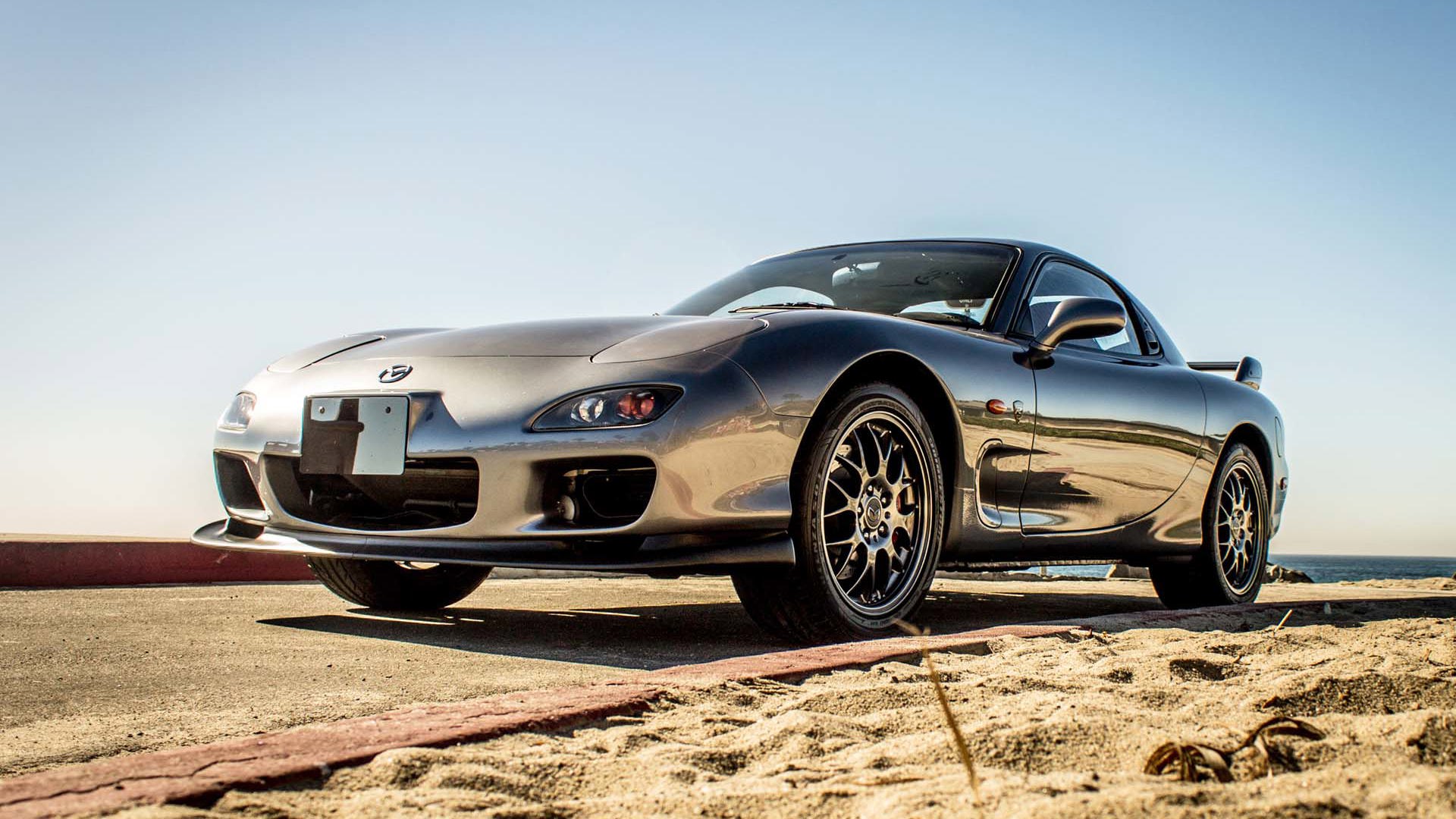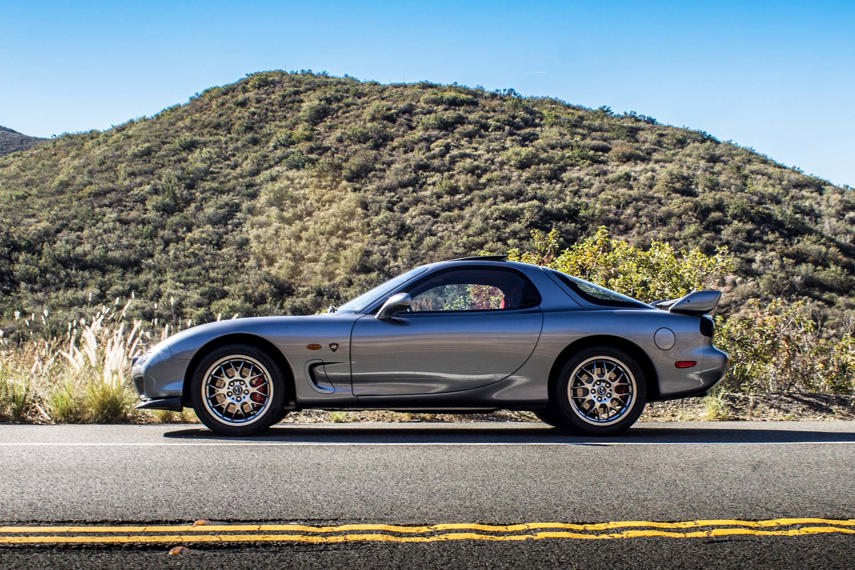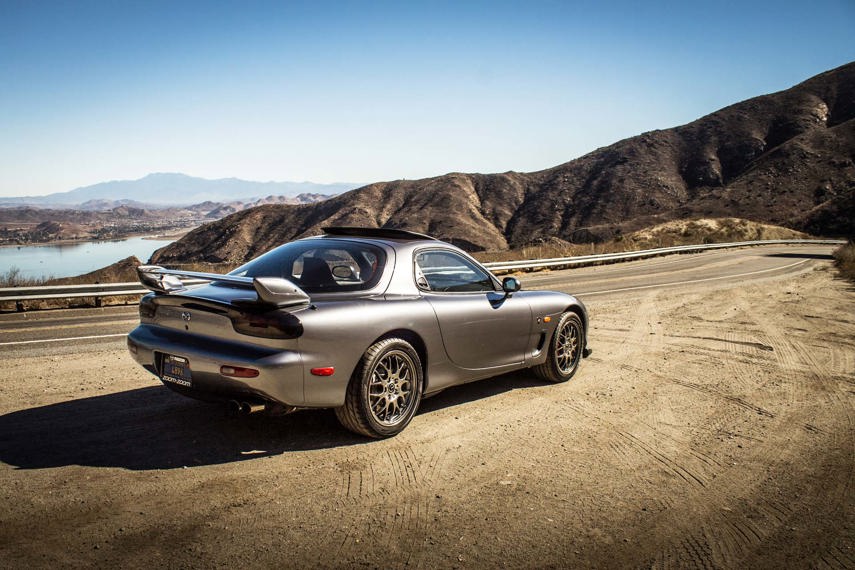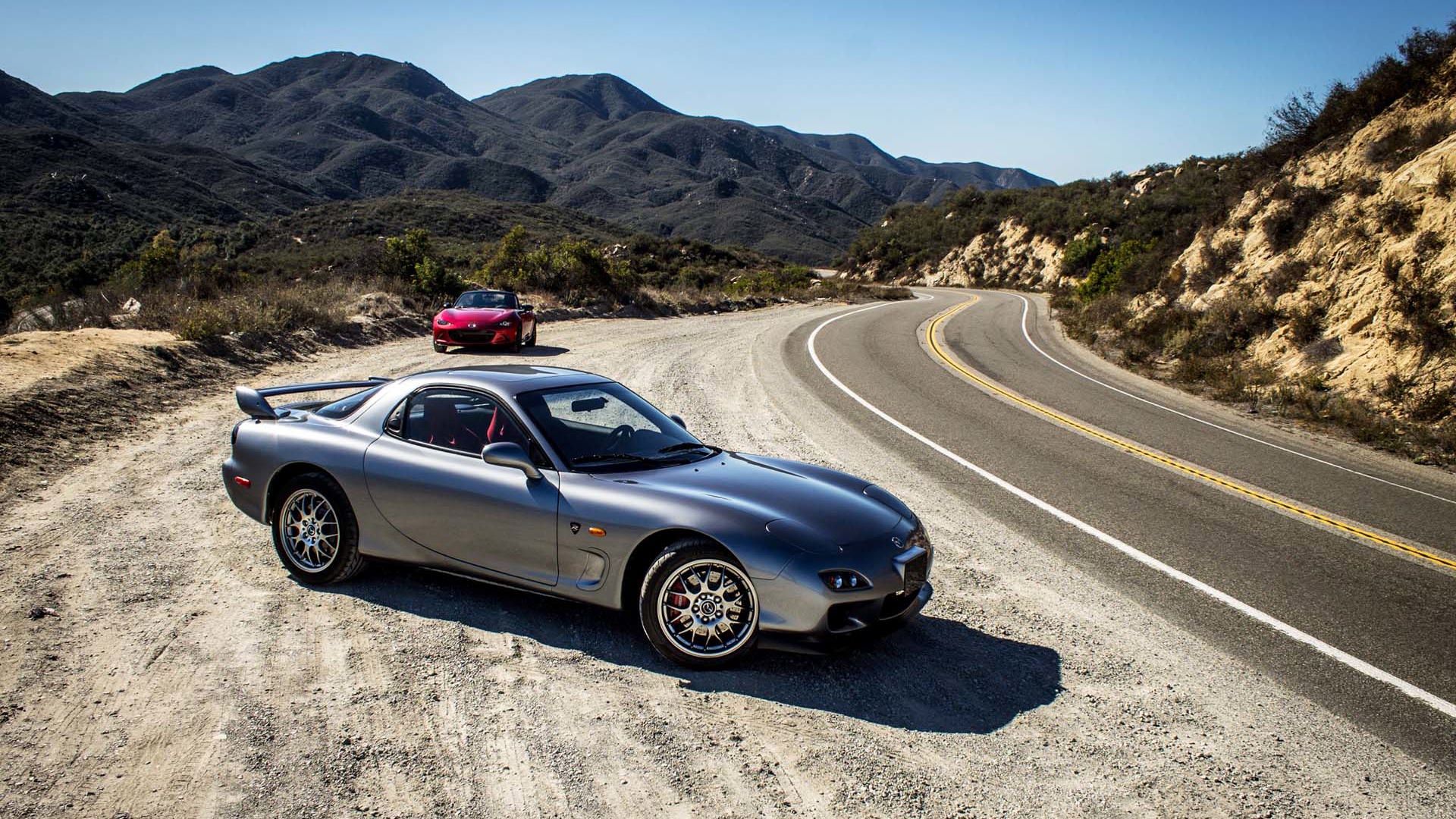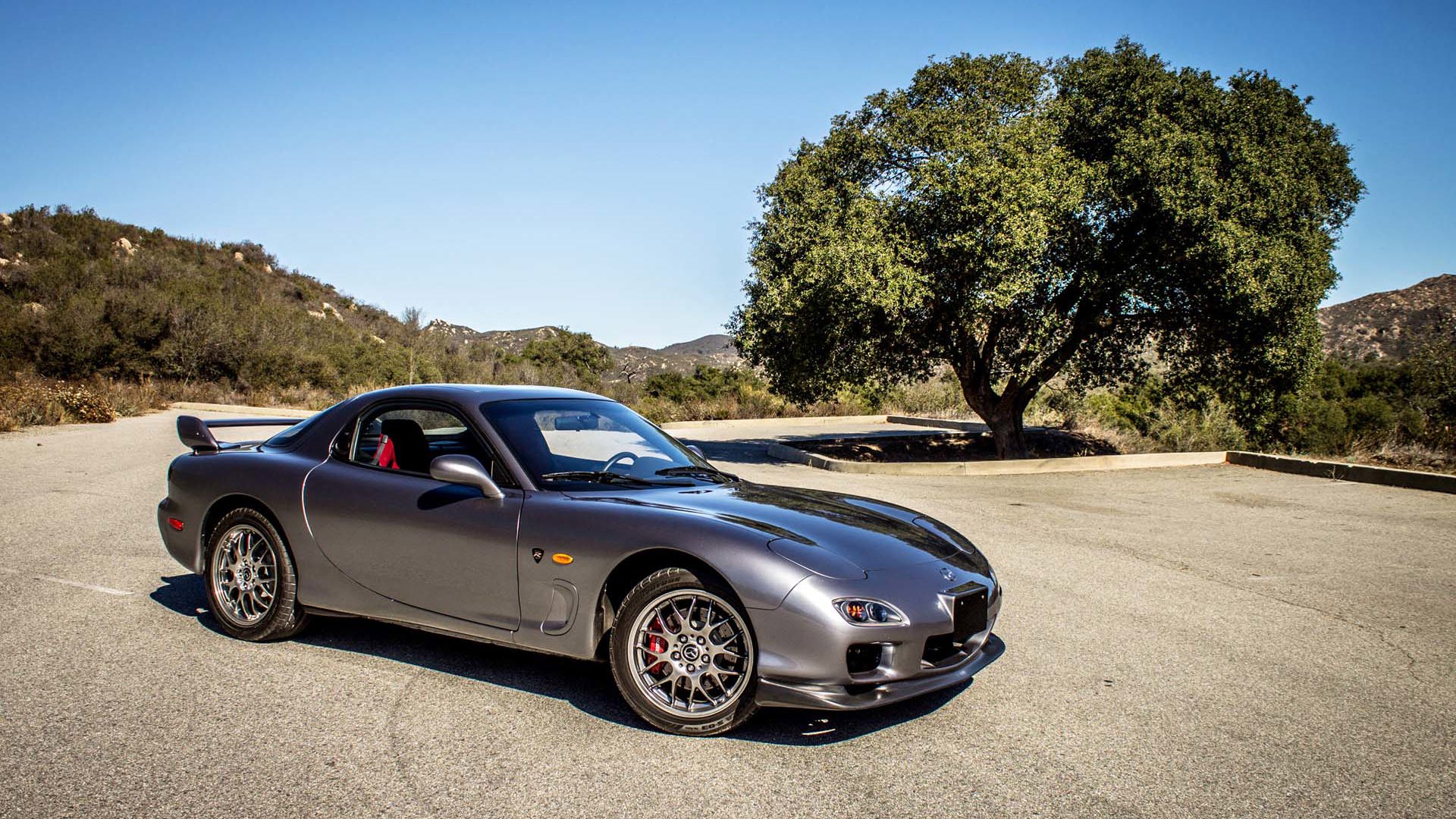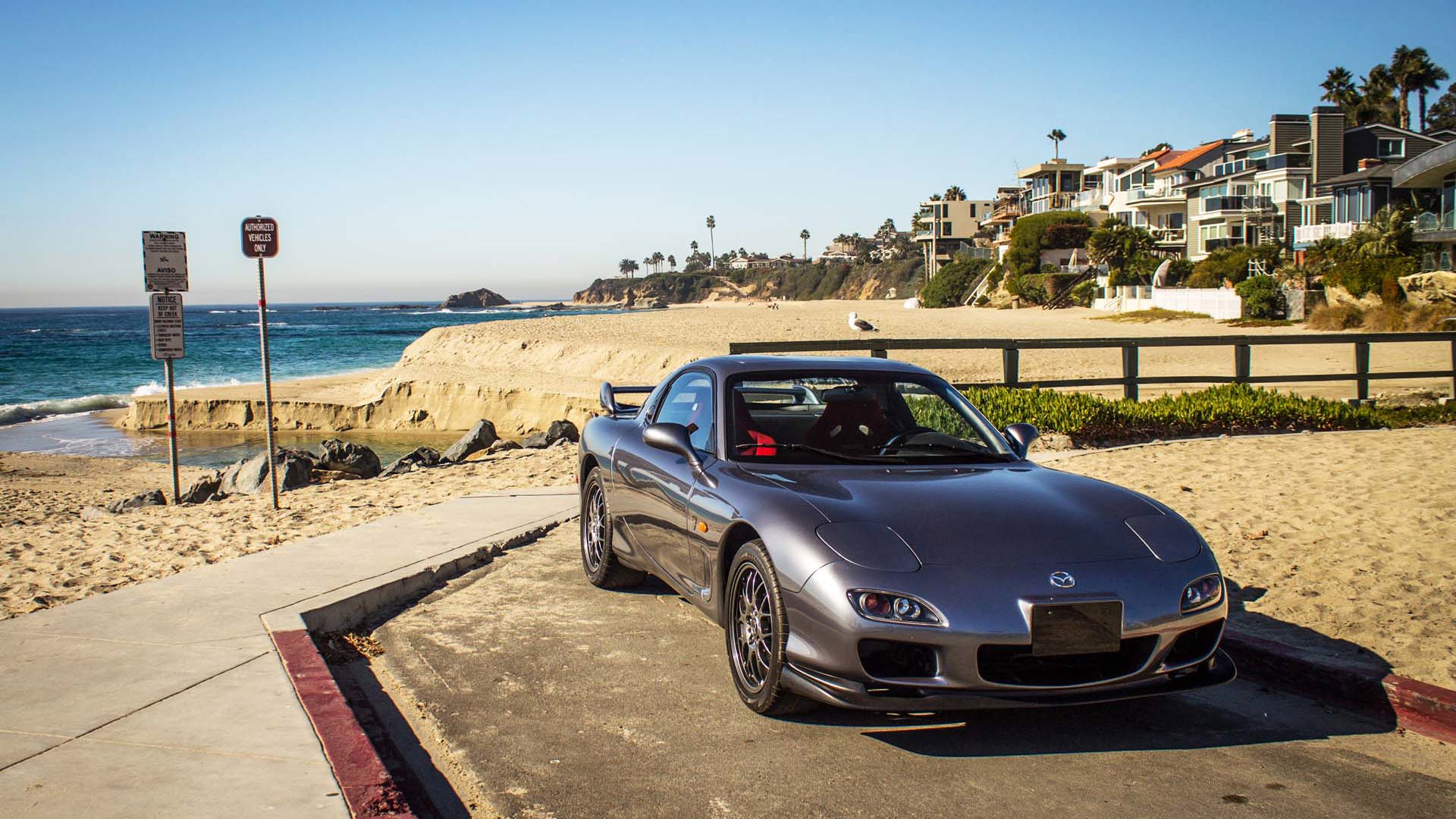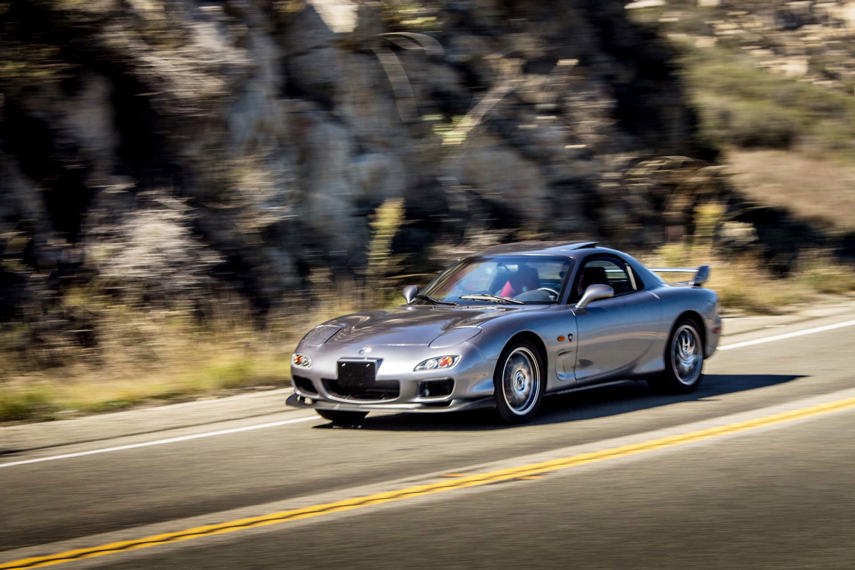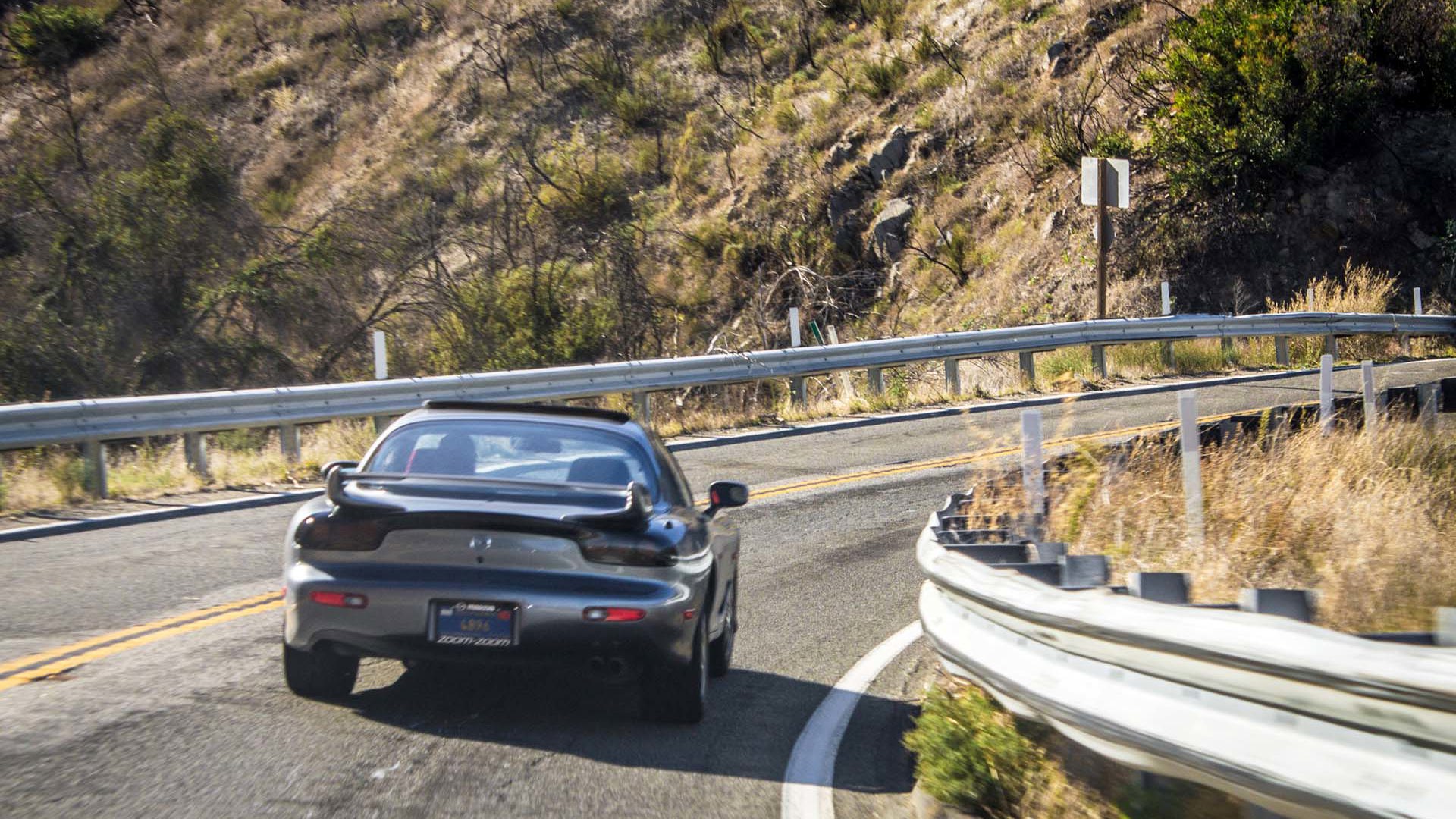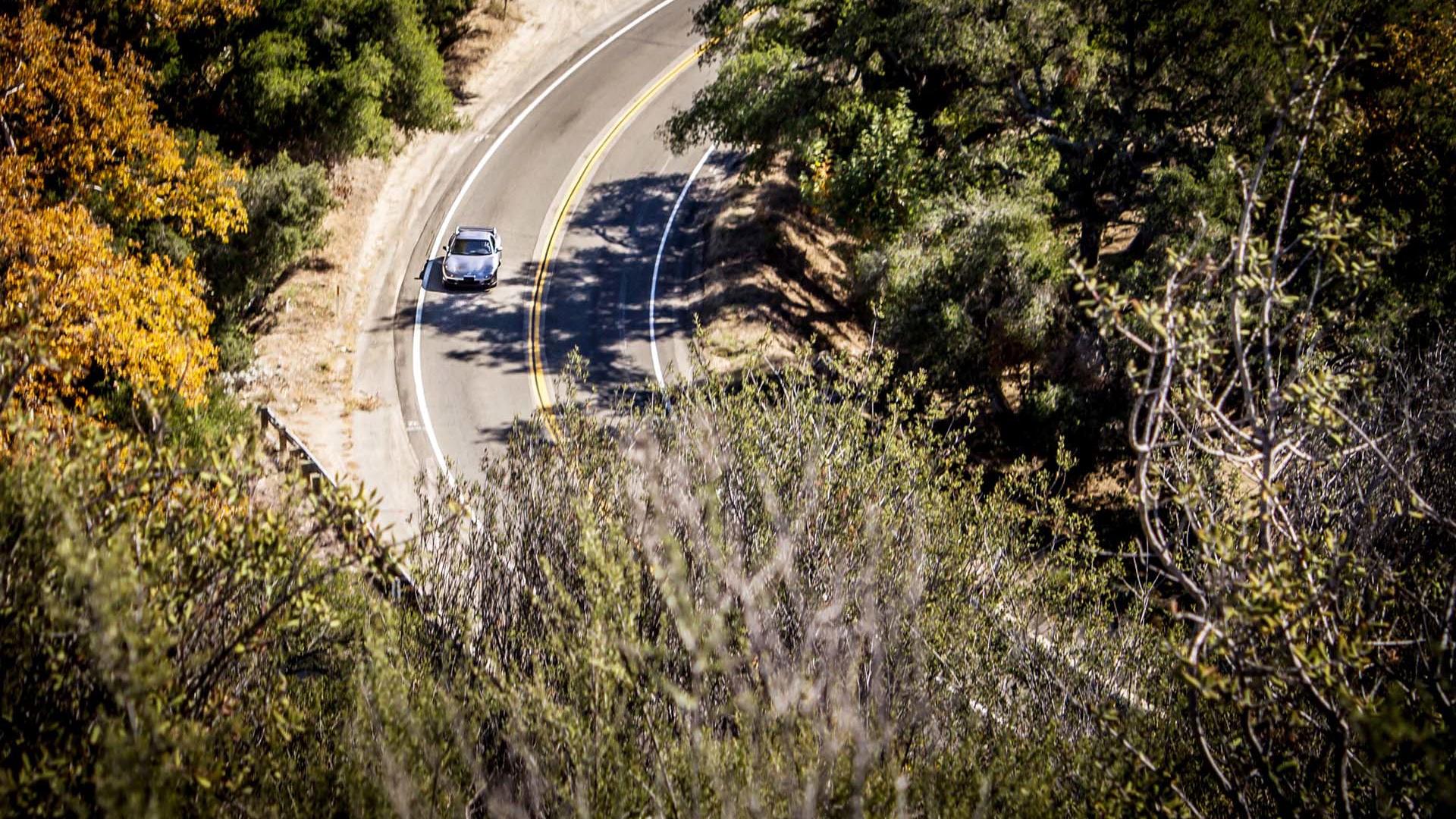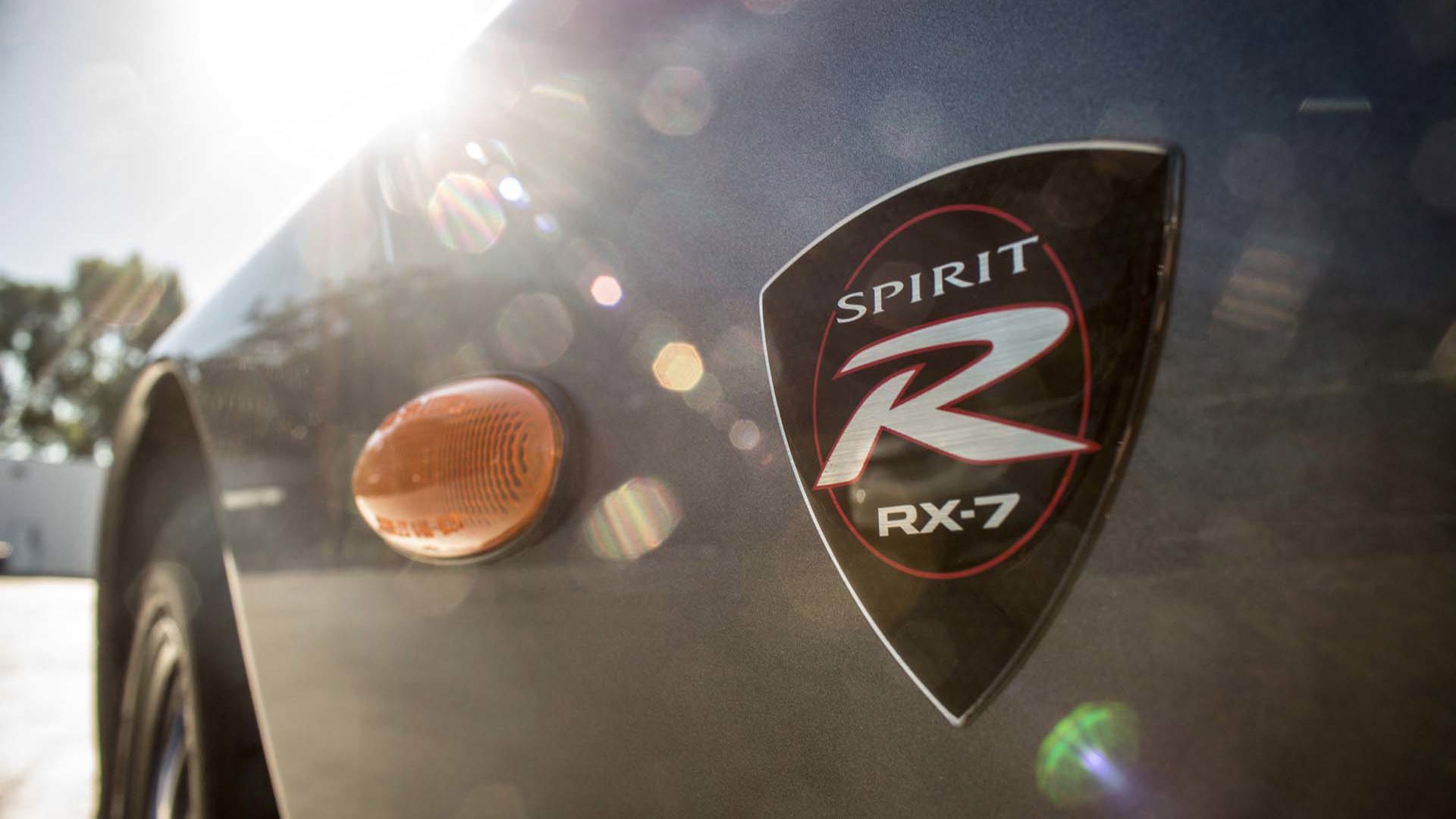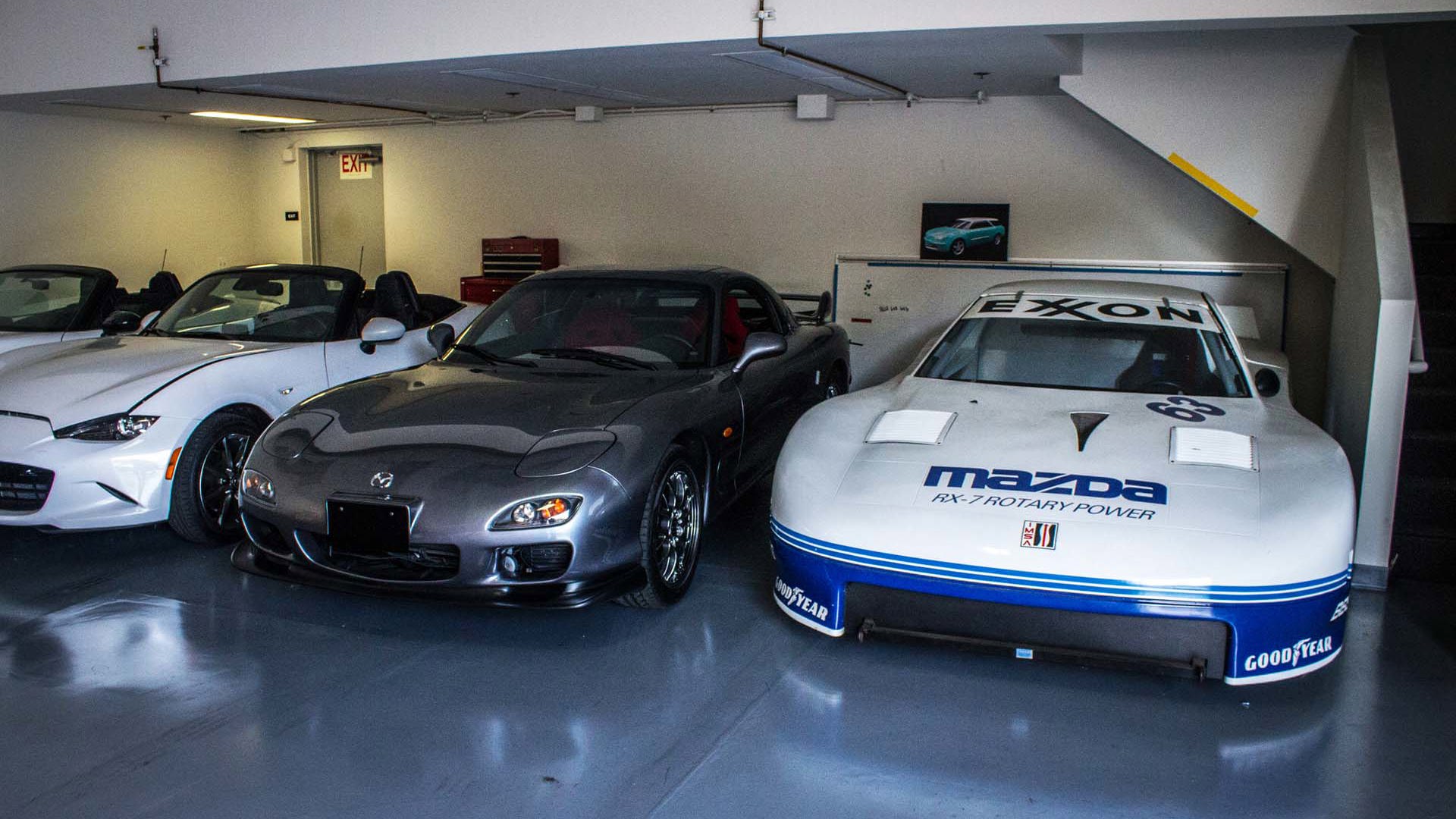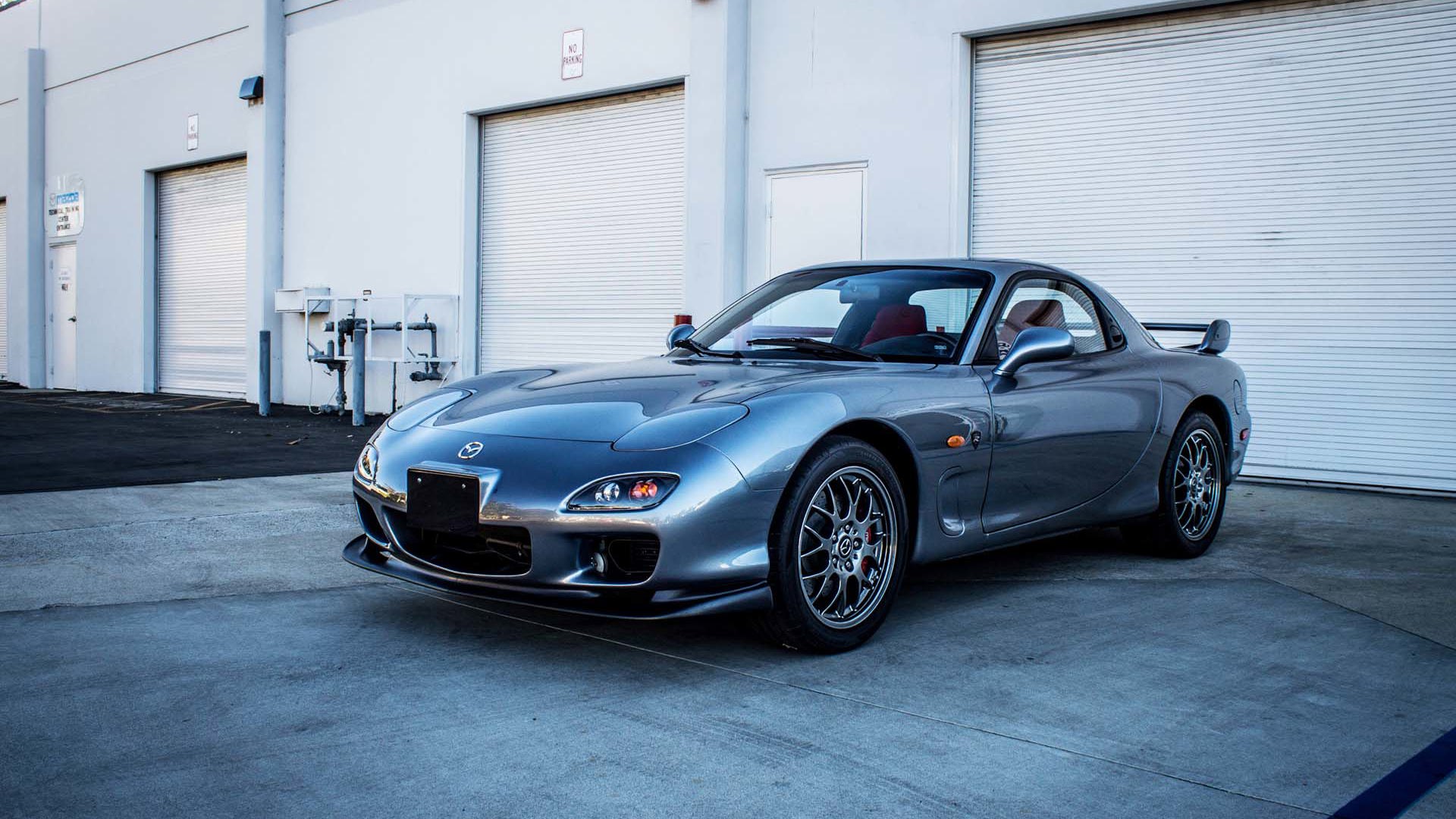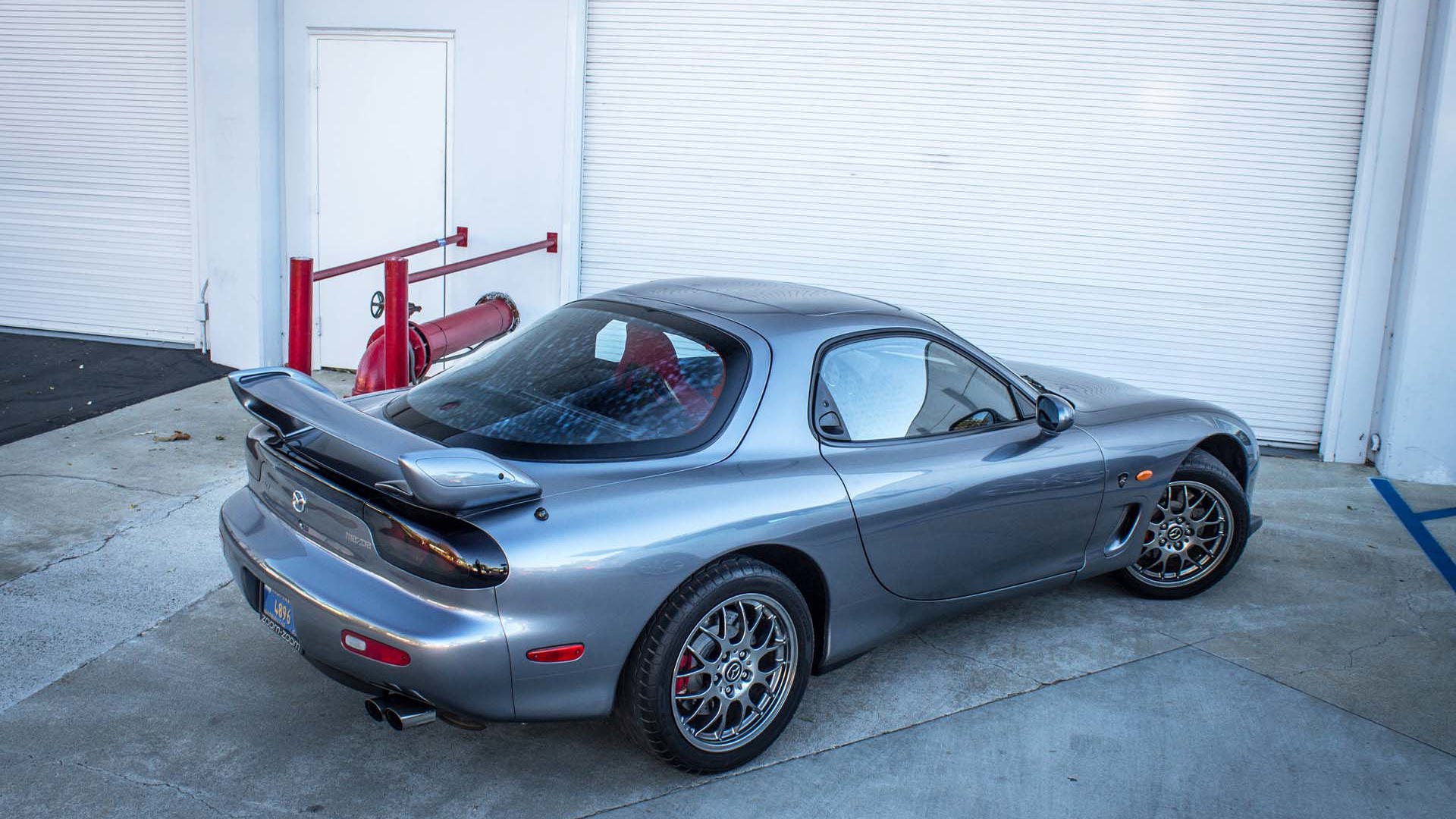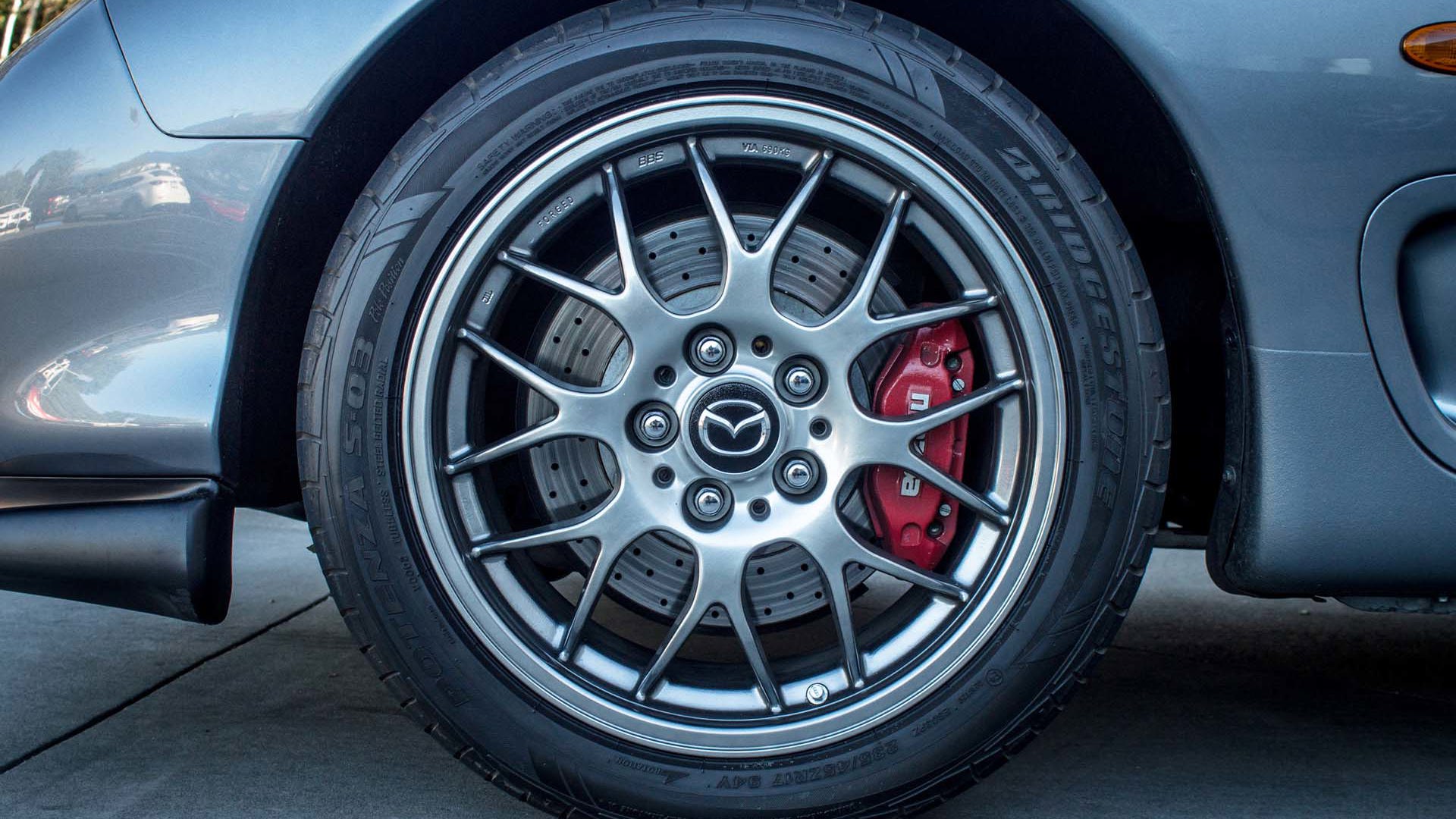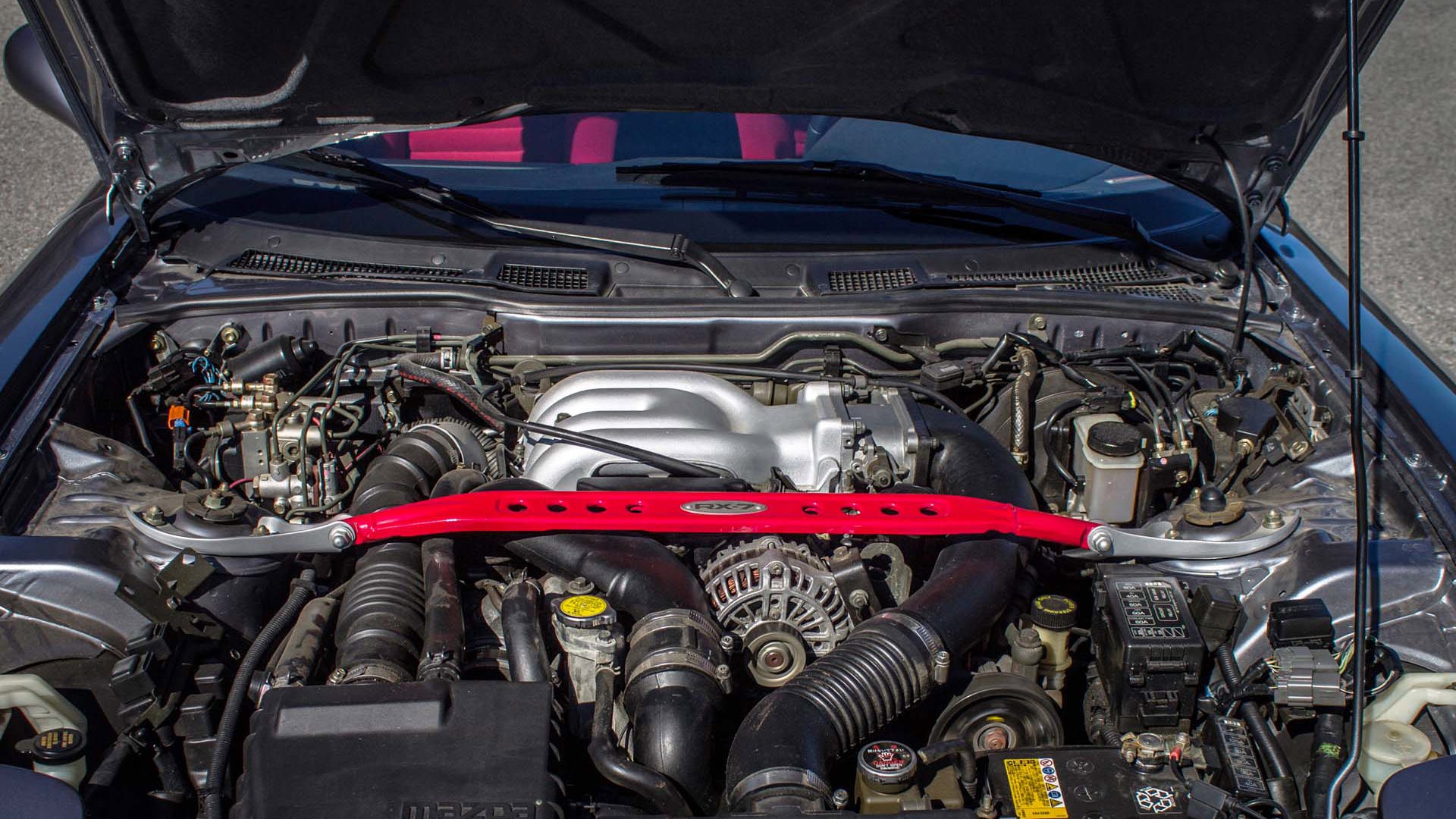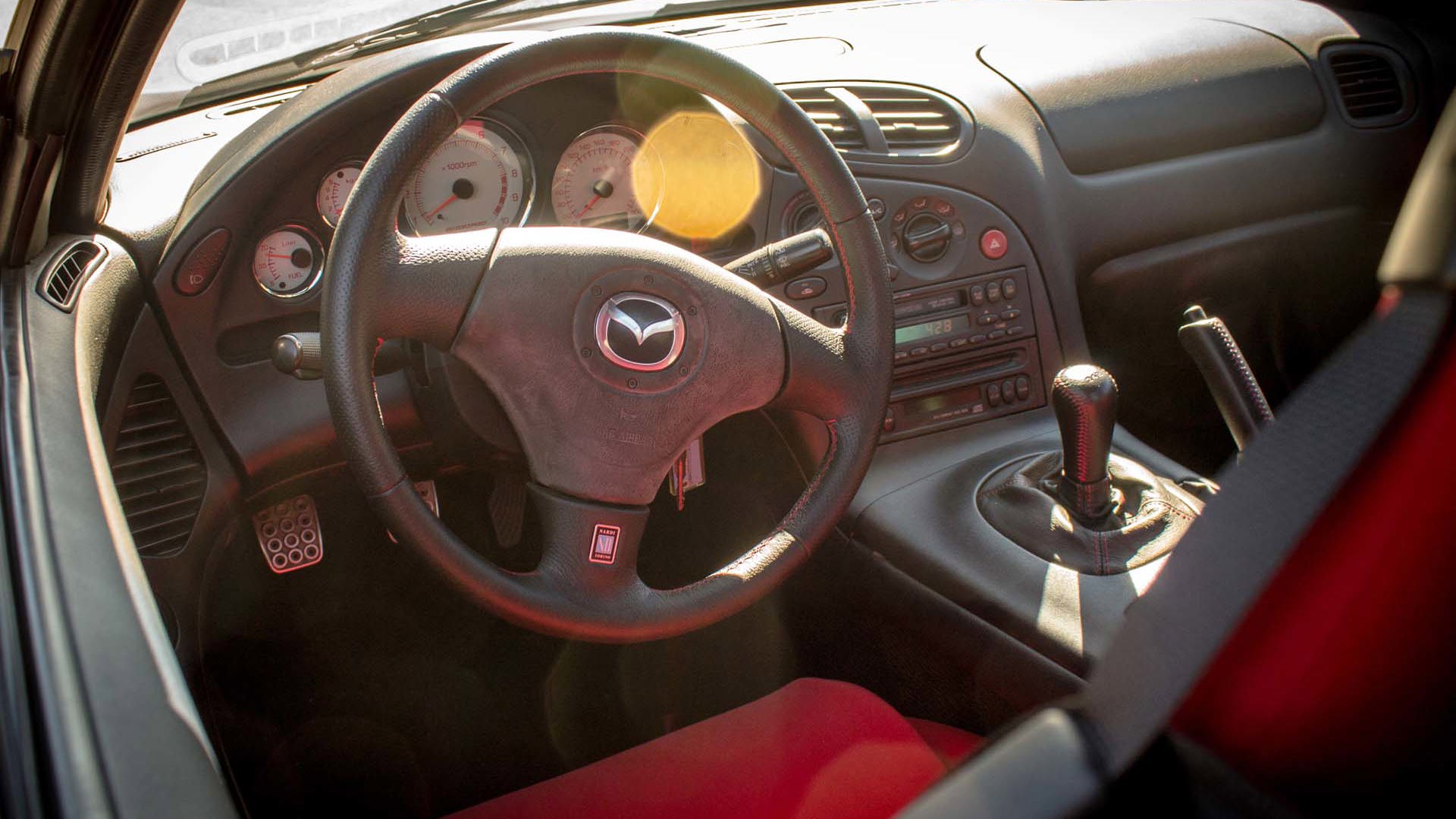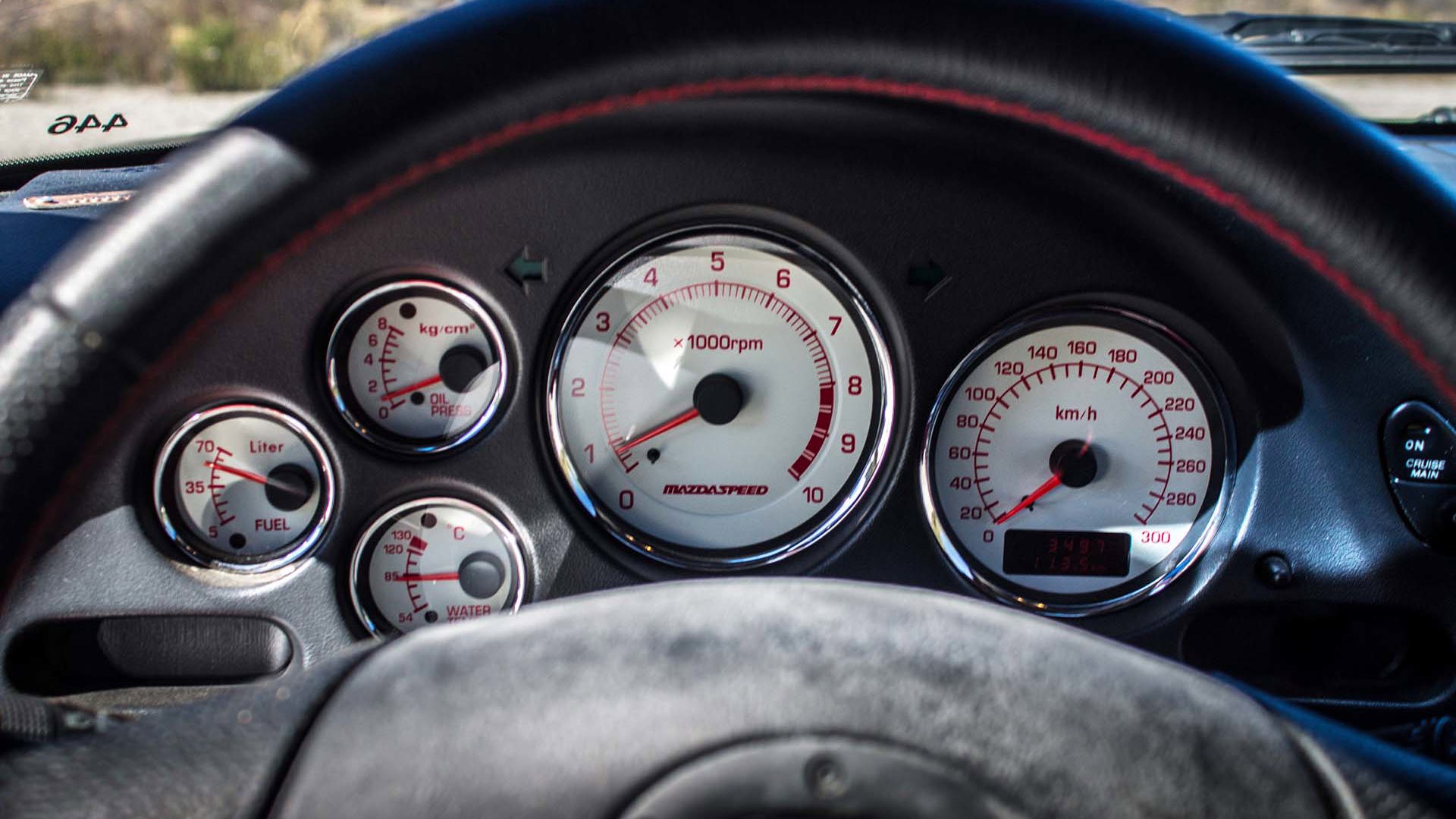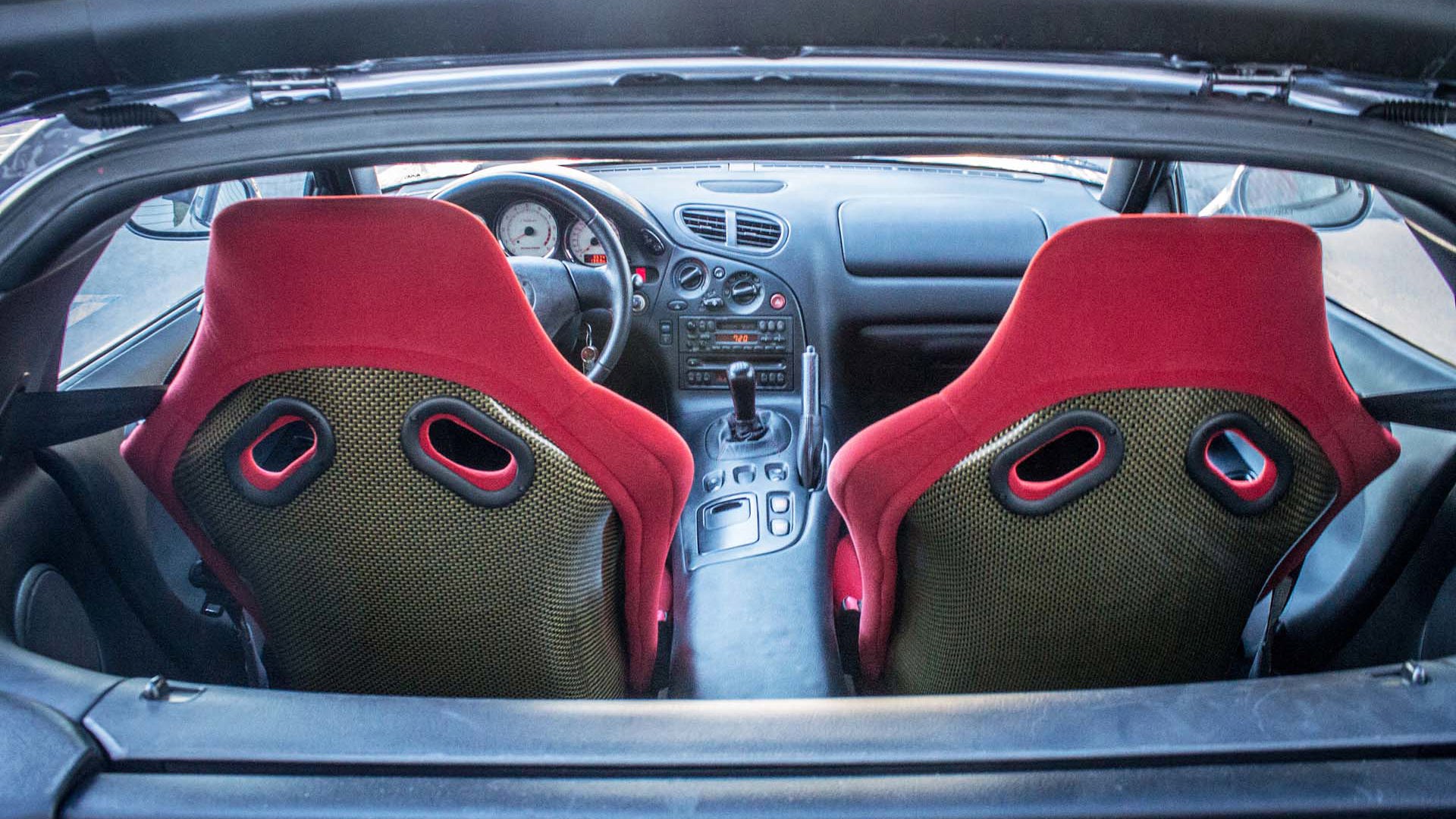“A strong feeling of longing, of remembering past struggles.” Nobuhiro Yamamoto leans back in his chair with a sigh and a fond smile. “And,” he pauses for emphasis, “Gratitude that people are still using it, as they should.”
We are backstage at the Tokyo Motor Show. Out front, the gleaming crimson length of the just-revealed RX Vision concept has galvanized the crowd, spurring conjecture at just how Mazda might bring back the rotary engine. Yamamoto-san is the chief engineer behind the whippet-like reborn MX-5, but here he is speaking of past work, when he was a young engineer working on a legend: the third-generation twin-turbo RX-7.
Nearly ten thousand kilometres away, the lights are off in a California basement beneath Mazda North America's own research and development centre. It's the worst-kept secret in the automotive world, and if you can bend somebody's ear long enough to get a tour, you'll find all kinds of half-hidden wonders. The shells used to cast the burnt-to-ashes Furai. Land-speed-record-holding streamliners. The heritage Miatas. Prototype racers from long ago Le Mans. Concepts. Classics. A low-mileage 323 GTX.
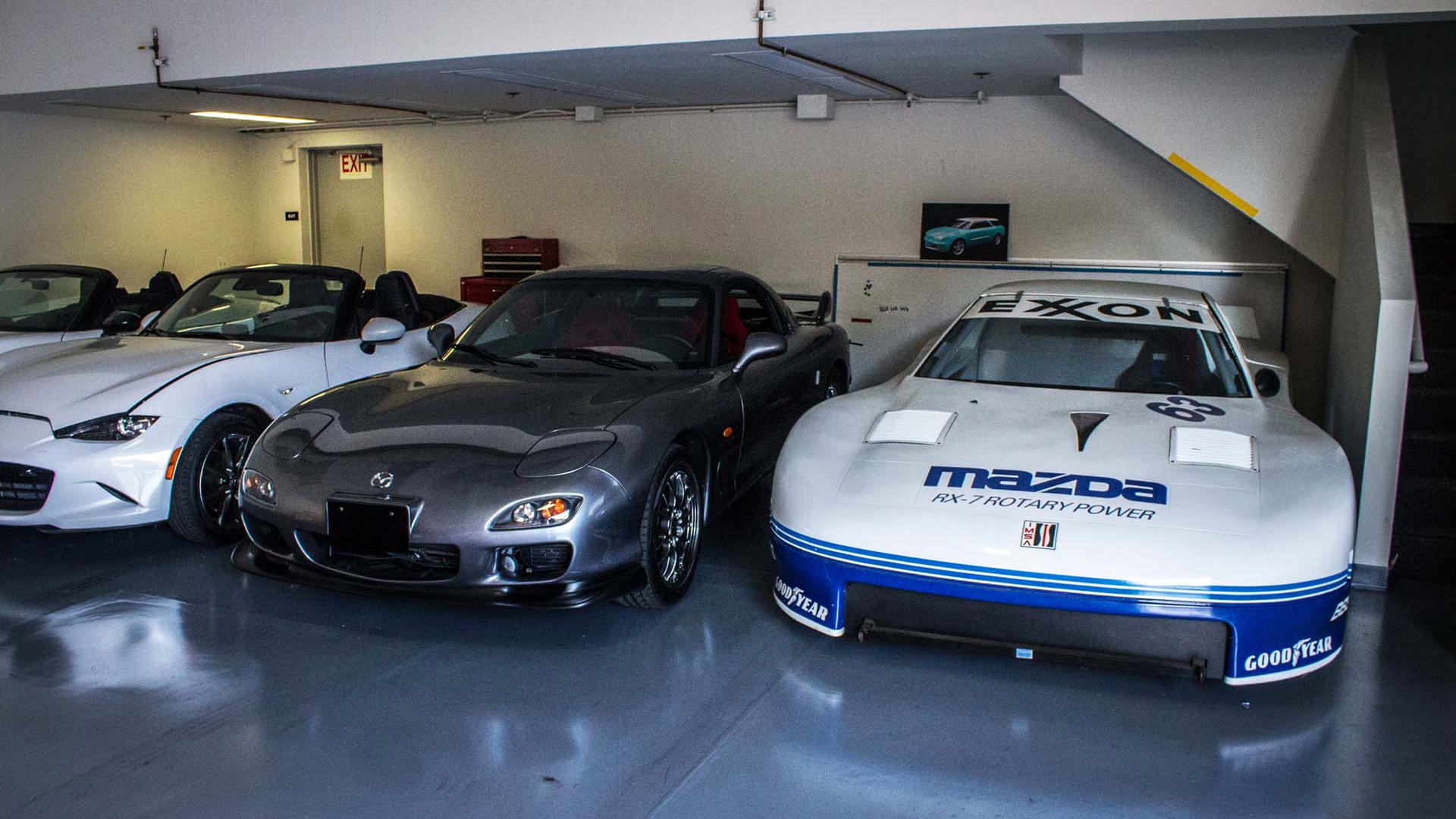
There's a gap in the lineup of cars parked against the wall, a single empty space with the cord of a disconnected trickle-charger lying coiled up. At my request, Mazda's agreed to wake something up out of their vault, to send it upstairs to the service shop where they work on all the head office fleet and get specials like the Super20 SEMA concept up and running. They've wakened a warrior from stasis, swapped out the fluids and aired up the tires. It's ready – am I?
Back in Tokyo, Yamamoto-san is explaining the challenges that made the creation of the last RX-7 such a difficult endeavour. He is at once serious and smiling, detail-oriented and expansive; when he walks in the room, he notices that the interpreter's centimetre-wide Mazda lapel pin is 30 degrees off from level and immediately reaches out to straighten it.
Mazda is perhaps the most Japanese of the major Japanese automakers. By comparison to its larger rivals, it often seems like there's little marketing department restraint on the engineers, way out there in relatively undeveloped Hiroshima. The RX Vision is proof positive: first, everyone gasped, and next they immediately started asking, “But why?” Why struggle along to bring the rotary engine back to life when a reciprocating engine would be so much easier? Put it another way – if a juggernaut like VW doesn't have the R&D potential to effectively solve the problem of clean diesel, how does Mazda expect to single-handedly resurrect the rotary?
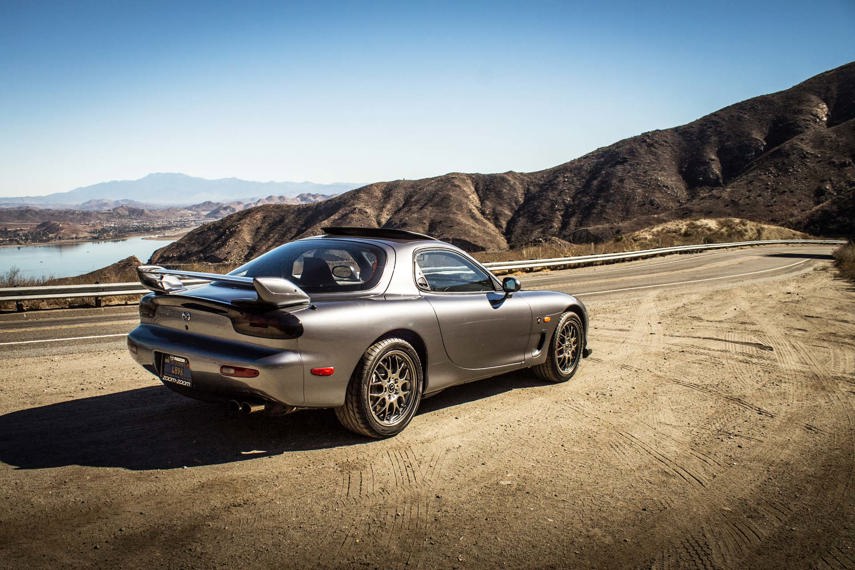
When I put this question to Yamamoto, he nods in acquiescence to the challenge, but points out that making the third-generation car was just as tricky. At the time the project first started, Porsche had just mastered sequential turbocharging with the 959 supercar, and here was Mazda attempting to bring that technology to the masses, while trying to strip all possible weight from the car.
By putting up a noticeboard accessible to engineers responsible for every part of the third generation, FD-chassis car, 100 kg was pared from the weight. This despite a bump in power of nearly 50 hp to the 13b twin-turbo rotary versus the previous single-turbo variant. It was just one facet of a development process that cut no corners, seeking not just to create, but to forge.
To have some idea of the prestige the FD-chassis project carried if you were a Mazda employee at the time, the rotary engine essentially saved the company from assimilation. The original crew of forty-seven engineers worked tirelessly to convert Felix Wankel's delicate but unreliable rotary engine into something that could work as both a commercial success and the unique technology to justify the existence of Mazda. They compared themselves to the Shijyu-Shichi Shi, the legendary band of masterless samurai known as the 47 Ronin. Like the ancient warriors, who all committed ritual suicide after revenging the death of their lord, Mazda's rotary engine team was seen as a lost cause, even within the company.
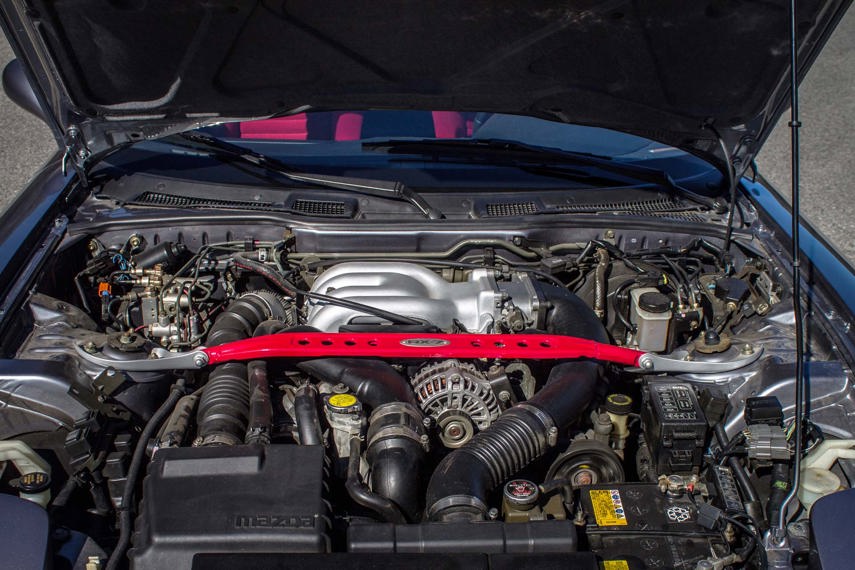
But then a breakthrough – by changing the shape of the apex seal, Mazda cured the chatter marks other manufacturers could not. Add in a new type of aluminum-carbon apex seal, and the first rotary-powered Mazda was born – the Cosmo Sport.
Their leader, another Yamamoto-san (Kenichi, who would rise to become chairman of Mazda), would say to his young team, “From now on, the rotary engine must be on your minds at all times, whether you are sleeping or awake.” This same obsession with detail would carry through the bloodline, making every RX-7 something very special.
However, we all know what happened next. Riding a wave of optimism and the reflected glory of the 1991 Le Mans win by the rotary-powered 787B, Mazda launched their katana-honed halo car right into the middle of a steep economic downturn. There are those who say the country never fully recovered from the bursting of the Japanese economic bubble.
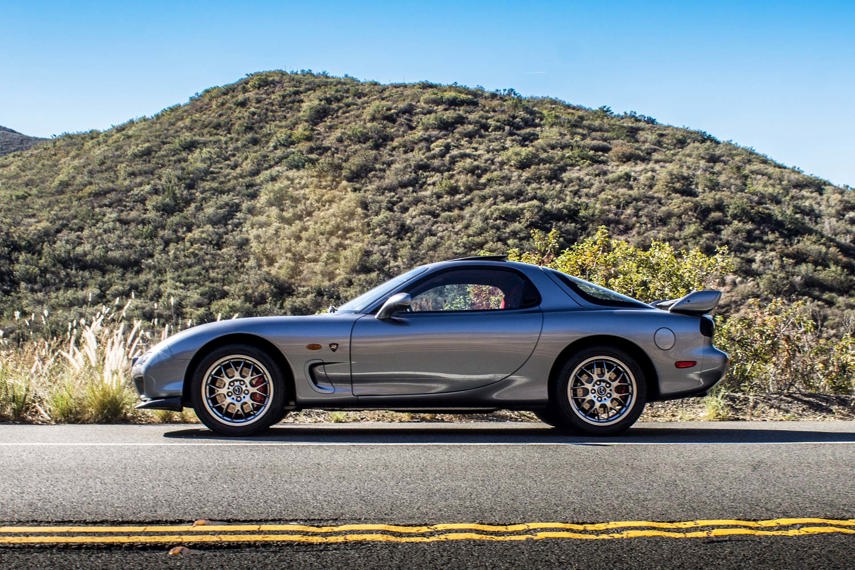
Still, for a brief moment, the FD RX-7 embodied the best the company could make. The Miata was the sports car for everyone, but the RX-7 was for experts only. Sadly, this also meant it was more than a little high-strung: the combination of high price and a reputation for mechanical disaster if not expertly maintained drove the car from North American markets. The last RX-7s reached Canada in 1995, and that was the end of it.
However, today in the California sunshine, I have the opportunity to get to grips with the last of the breed. The RX-7 twin-turbo continued to sell in the Japanese domestic market until 2002, when a final run of specially prepared cars hit the market as a grand finale. They called them the Spirit R, and they came with essentially every possible performance boosting option.
The twin-turbo rotary engine now made the maximum-permissible 276 hp, and like top-level offerings from other manufacturers, unofficially made more. The car had signature aerodynamic tweaks, lightweight forged BBS alloys, fixed-back Recaros that fit the driver like a second skin.
All 1,500 or so of the last run cars were right-hand-drive, and you still see them showing up at Mazda fan meets around Japan. However, there was one more car made, one machine with a ghost of a VIN: unregisterable, unique, a lost ronin on a foreign shore.
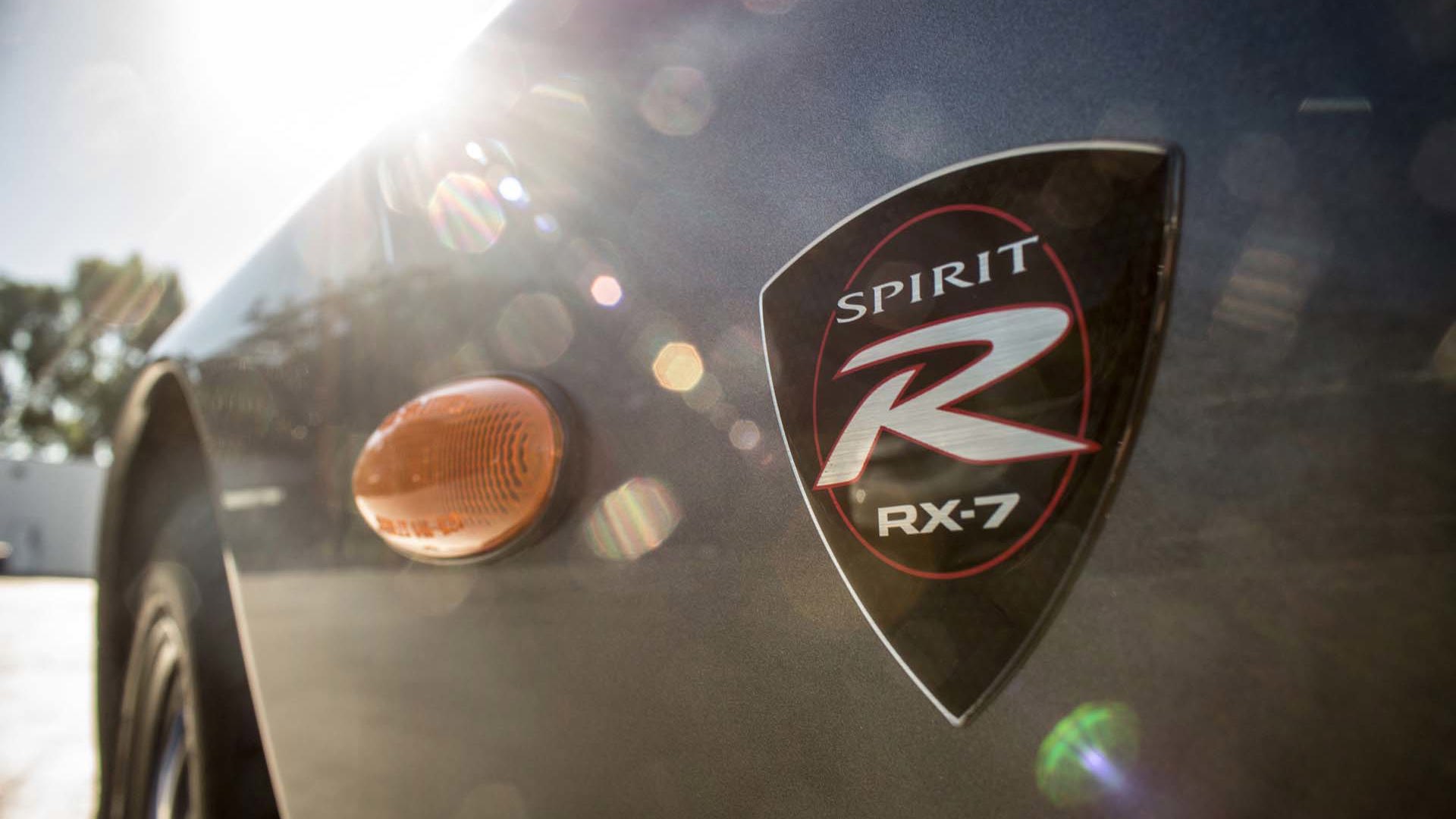
It was created for Mazda North America's VP of sales, who regularly drives an ex-Le Mans 787B at the Monterey historic races. When I flick open the ashtray, his business card is tucked inside, a subtle reminder that this is a borrowed car. The 13b cranks over with its customary otherwordly whirr and hums to life. We set off from the back lot of the R&D centre, in search of mountain roads and meaning.
For a 2002, the Spirit R drives old. It's fresh enough, and the mileage on the clock is a scarcely believable 3,000 km, but the smell and the seating position and the ergonomics are pure 1990s. The people who created this machine didn't conceive of a world with adjustable throttle mapping, let alone the distractions of infotainment; at low speeds, the R feels like it's chafing against the bridle, anxious to be off and galloping.
California's traffic is awful, but eventually five cars turn left and we go straight on. Straight ahead, up into the rolling hills and dry canyons, out of a first long sweeper to find nothing ahead but the beckoning empty road. Drop the hammer.
If you drive the twin-turbo 13b gently, it wheezes and complains and stinks and gets crappy fuel economy. Whip it up like the jet turbine it wishes it was and it screams with savage joy, a low-flying fighter plane.
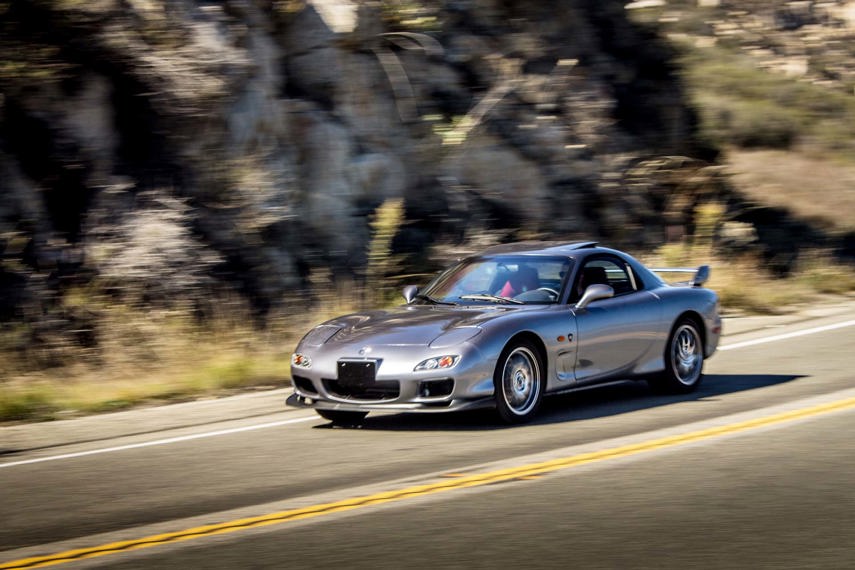
But the powerplant's not even half the story, not with the way the steering comes alive at speed, chassis and helm working with you and urging you ever onwards. At the back of my mind: borrowed car, no stability control, tires of unknown provenance. But my frontal cortex is too concerned with heat, sound, and speed. The Spirit R is all we were promised and never had, the Miata's deadlier older brother.
It's a wonderful car, and even if Mazda celebrates the fiftieth anniversary of the rotary engine by pulling the wraps off a new RX that's as faithful to the ideal as the current ND MX-5 is to the original Miata, the Spirit R isn't something that can be replicated. If you're a collecting type, and a sleuth, find and tuck one of these away – there'll never again be anything like it.
For these days, we fight our wars with drones, not swords. Speed is the product of microprocessors, not neurons. The wandering ronin are gone, and in their place a kinder, gentler automotive society.
It makes a lot of sense, and resurrecting a ghost of the past like this does not. But having driven it, having tested a thumb on the edge of the blade and come away bleeding and grinning like a madman, I get it all. Longing. The struggle. Gratitude. It's irrational, but then, so is love.
